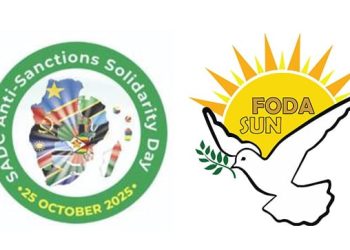Sayed Abbas Shubbar – Director of Religious Freedoms Department in Peace Organization for Human Rights
Crime against humanity is a title that can perhaps be defined as follows (a definition most approaches are compatible with): A set of crimes that annihilate basic human values and kills and threatens the people exposed to these values. These crimes include religious, social, and political violence. It also includes sexual harassment or torture of the prisoners or hiding those held captive, etc. All these cases are considered crimes against humanity.
There are prominent institutions that fight against these crimes. I name three main institutions: 1) Amnesty International, 2) the United Nations, and 3) the International Court of Justice.
What the crime against humanity truly is? What is difference between the crime against humanity and war crimes? Some have confused war crimes and crimes against humanity. However, we should note that these two concepts are different. There are some commonalities, but there are also differences. Overall, it can be said that a crime against humanity is different from a war crime in that war crimes are always armed. However, crime against humanity can occur in armed situations, while it can also occur in non-armed situations.
Numerous crimes against humanity have been recorded during history most important of which are WWI and WWII which made millions of victims and a high amount of destruction in residential areas.
Numerous international crimes have been recorded so far, such as religious, social, and political violence, extortion and concealment and abuse of prisoners and captives, family violence, or other violence.
This violence has made a challenge for the international community and international organizations have tried to confront these cases of violence and support those exposed to them.
Naturally, there is an issue in the meantime about which I will speak, and that is perhaps there is a series of religious conflicts with some types of violence, i.e., religious understanding is not compatible with some of these titles and that is why it is required to reflect on some of the laws passed to confront these cases of violence and crimes so that they would not contradict the existing religious systems. A common ground should be created between the international organizations and the countries with religious governments, or the countries whose legislation is also based on religious sources.
The definition of a crime against humanity was first provided in the Hague Convention of 1907. This convention emphasizes the formation of a complete set of laws against anti-human crimes and also expresses the war regulations and the fact that those living in areas involved in the war are always under the protection of the laws and supports provided by the United Nations.
The definition of crimes against humanity has evolved, passed through some milestones, and some modifications have been made to it. However, the official definition is still the definition provided by the mentioned convention. The framework of crimes has been investigated by Amnesty International, Security Organization, and the United Nations, such as the law passed in 1945 in Article 6 of the Treaty of London according to which the crimes against humanity include murder, exile, slavery, and other inhuman acts that are applied against citizens; whether in war or non-war situations, or any law that is based on racist or fundamentalist politics, or that pertains to a crime within the framework of a court, whether or not it involves a violation of the national law of that country.
Then, to emphasize the Treaty of London, when the United Nations issues the sentence of the International Court of Justice in former Yugoslavia, this organization also continued to investigate the crimes against humanity and concluded that whether armed or unarmed, according to Article 5, these crimes are considered crimes, whether they are domestic or foreign.
Despite the official definition of a crime against humanity and the international agreements on them, the framework of these crimes includes the crimes recorded and announced by the Security Organization and the United Nations. In 1964, the International Court of Justice, in a court held to prosecute a war criminal in Rwanda, in the third article of its basic principles, adds a note that did not exist in the Yugoslavian court system, and it implies that “crimes against humanity should be the result of a systematic effort for that crime, or should be extended, and does not necessarily have to be associated with armed conflicts”.
Accordingly, the connection between these crimes and war crimes was set aside and the crimes against humanity can take place in any situation, whether in war or non-war situations, i.e., it is more general than war crimes, so it can be committed at any time and place.
Thus, in the definition of a crime against humanity, it was tried to give it a more general sense. Based on the Treaty of Roma, in a meeting held on August 17th, 1998, a text is given to show that crimes against humanity can be any action in the framework of widespread attacks, or planned genocide of the citizens, done purposefully, and these cases include mass killings and genocide, torture, displacement of citizens, criminal torture, and acts of aggression. Also, activities that threaten the lives of people by atomic, chemical, biological, or any other substances are considered crimes against humanity. All of these cases are the greatest damage to human life in the world. Crimes against humanity are among the biggest crimes.
According to the Treaty of Roma, crimes against humanity have components that can be accounted for such crimes. One of these components is credit, i.e., this crime should be known as a crime by the community.
Another component is that the crime should be also known as a crime by the international community. Also, it should be international and against international law.
The other case is infringement, i.e., it should threaten world peace.
Another component is social violence, which again threatens world peace.
International violence, i.e., it is known as violence worldwide, and threatens world peace.
To realize these cases, a set of components should be formed. The material components of crimes against humanity can be extracted from the analysis of the seventh article of the Statute of the International Court of Justice. The material component of crimes against humanity is committing acts of obvious inhuman aggression against the basic values of a person or a group of persons, such as intentional murder, mass murder, slavery, torture, etc. It is observed that these crimes have punishments according to the law in every country.
Also, “denial of justice” crimes are included in this group. In the international convention, the member states are bound by the necessity of providing justice to citizens. If a government denies its citizens this right, it commits a denial of justice. This subject has been noted in the Vague Convention of 1907 in Article 23, Clause C.
Also, the crime of incompatibility of national law with international law is such a crime. It emphasizes that national laws in each country should be in line with the national requirements. Among the examples of such crimes, the genocide of 1948 can be mentioned after which this article was passed. The parties to this agreement undertake that their decisions are based on the necessary legal measures to guarantee this agreement. This point has been taken into consideration in many agreements and this paragraph also emphasizes the preference of international law over domestic law.
Another crime is the occurrence of a crime upon refusal. In this situation, the government does not take positive or negative action, but still commits a crime, although it could take an action to prevent a crime, i.e., the government stays neutral, and this neutrality leads to crimes, such as murder by not giving food to a captive. Clear examples of these cases are political, religious, and racial prisoners, like what happened during Nazism.
However, the spiritual components of crimes against humanity include a set of actions that have been mentioned in the seventh clause of the Treaty of Roma. These spiritual components have been expressed exclusively in the cases. In crimes against humanity, the spiritual components are necessarily used that are resembled in judicial affairs, and require awareness and will, and the murderer should know the actions he is doing are considered to be crimes, and despite this awareness, he/she insists on the crime. As it happened in Andalusia during WWII against religious minorities or dissenting opinions.
Also, crimes against humanity have a religious aspect. The religious component means that criminal behavior can be accepted although the source and origin of criminalization of it are different from those of other laws. There is no international crime in this case since there is no legislation for it on the one hand, and on the other hand, the nature of conventional laws does not have such a requirement. Therefore, to consider an act to be a crime, an international principle a text agreed upon in international agreements would be enough.
And, the international component of the crimes against humanity: Naturally, crimes against humanity are international crimes. The rights violated by these crimes threaten human beings. For the presence of an international component, it would be enough to have a preplanned plan against a group of people who have gathered around a specific belief or religion, and in this state, the criminal and the victim might be from the same country.
Fighting against crimes against humanity has several common features including the rejection of legal immunities, i.e., such a person cannot have any types of immunities during the trial, and he is deprived of such immunities in international trials.
Recognition of universal jurisdiction to punish crimes against humanity: recognition of universal jurisdiction to prevent the release of criminals at the international level.
Removal of time limitations in crimes against humanity: The national penal laws are usually subject to the passage of time. For example, Algeria and some other countries have accepted this law. Perhaps, one of the reasons behind this law is that the convict is allowed to return and after a specified duration, get back to a healthy life. However, a dangerous nature that has distinguished international crimes, especially crimes against humanity, has led to the failure in the implementation of this principle in international penal law. This issue may be a conflict between international law and government laws in relation to a particular defendant.
At the end of the discussion, the obstacles in the trial of perpetrators of crimes against humanity are noted. These obstacles include cases such as the slowness of its administrative process. This slowness influences the continuance of these crimes and prevents the trial from progressing.
Another problem is the legal knots in the way that prevents the trial from progressing.
Another problem is the limited time of trial. Any court has a specific time, but it might not be able to deal with that criminal at that time.
Also, the geographical problem may affect a trial and it might be under the influence of various regions, but some of these regions might not cooperate to realize justice.
Another problem is the legal source. Sometimes, national law restricts international trail.
Another problem is international cooperation. Some countries in which crimes against humanity are committed do not effectively cooperate with the national community.
Some obstacles are historical. Obstacles to the trial of people who have committed crimes in the past, such as the fact that it is considered a crime according to the code of conduct, but that government supports some people who have committed crimes in the past.
Now we get back to the question we raised at the beginning of the discussion. Is there a conflict between this view of crimes and the religious view? Although various religions have condemned the violence and many crimes, and there are some punishments predicted for them, which are mentioned in the Treaty of Roma, there are still conflicts, since there are different religious principles and rules, and some of these principles are related to the meaning of justice and punishment. However, what is important is to interact with these conflicts and emphasize religious justice and punishment and establish a balance between religious and legal justice and punishment.
Some religions consider forgiveness to be one of the religious principles and deem forgiveness of criminals with heinous crimes to be admirable. This also contradicts international trials.
In addition, religious belief about ruling and judgment is very important. From one point of view, judgment is a divine responsibility, and perpetrators are sometimes tried in the hereafter.
These challenges have been posed due to different religions and various legal principles, i.e., there is the question of whether the religion is considered a source of legislation or not. Or it can be the only source of legislation? For example, this question is currently raised in the constitutions of Islamic countries. Therefore, it is required to establish a kind of balance between religious, national, and international laws.






